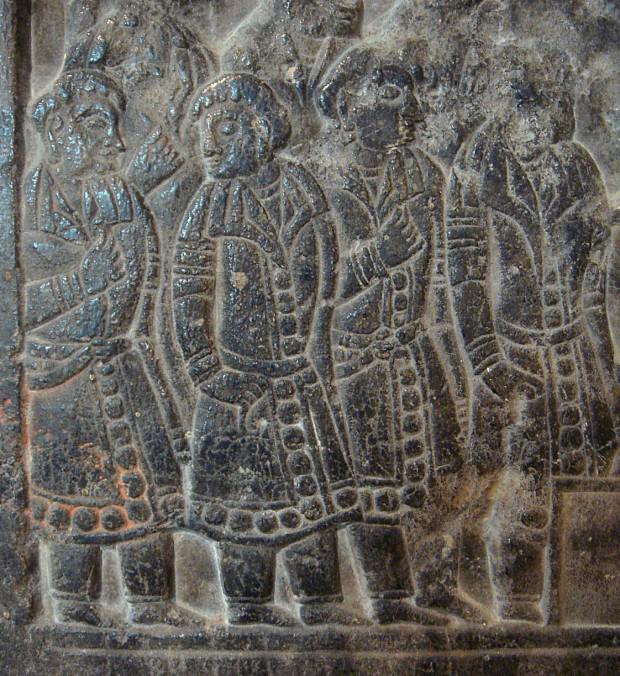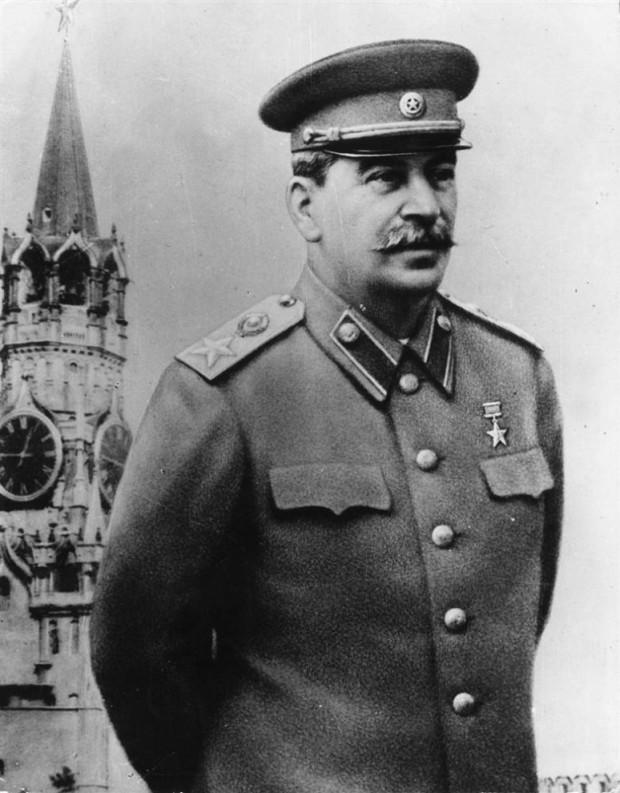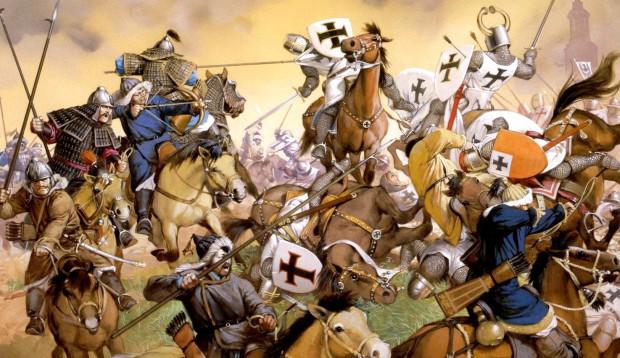790
10 most deadly events in history
It is unimaginable tsifry
Human history has always been bloody, rich in large-scale destruction and casualties. However, certain events stand out from the other - their unimaginable catastrophic
1. The slave trade across the Atlantic. The death toll - 15 mln
Atlantic (and transatlantic) slave trade began in the 16th century, reached its peak in the 17th century, until it finally abolished in the 19th century. The driving force behind this trade was a need to establish the Europeans in the New World. Thus, European and American settlers began to use slaves from West Africa to meet the huge demand for labor on their plantations. There are various estimates of the number of slaves who died during that period. But it is believed that out of ten slaves caught in the hold of a ship, at least four have died from abuse.
2. The end of the war and the transition to the Yuan Ming Dynasty. The death toll - 30 mln
The Yuan Dynasty was founded by Kublai Khan, grandson of Genghis Khan, about 1260, the year. This was the most short-lived dynasty in Chinese history. Its representatives have ruled for centuries, and in 1368, the year everything collapsed, and chaos began. Warring clans began to fight over land, increased crime, and then the famine among the population. Then the Ming Dynasty took everything under control. The reign of the Ming Dynasty some historians described as "one of the greatest eras orderly government and social stability in the history of mankind».
3. An Lushan Rebellion. The death toll - 36 mln
About 500 years before the Yuan Dynasty, China controlled the Tang Dynasty. Lushan, a general from the north of China, decided to seize power and declared himself emperor (creation Dynasty Yang). Lushan Rebellion lasted for 763 to 755 years, and in the end the dynasty Yang defeated by the Tang Empire. Ancient War has always been a very bloody affair, and it was no exception uprising. Killed millions of people, and the Tang dynasty never recovered from the effects of the war.
4. Taiping Rebellion. The death toll - 40 mln
We move forward a thousand years, and again we see the Chinese. But this time, it helps a little French and English. In 1850, China was under the control of the Qing Dynasty. In this dynasty were serious problems even before the uprising, because of natural and economic disasters that have caused havoc. Also worth mentioning is that during this period the Europeans began to import opium into China. It was then that the historical stage was Hong Xiuquan, who claimed, among other things, that he - the younger brother of Jesus Christ. Hon created the "Taiping Heavenly Kingdom", and began to slaughter. Taiping Rebellion happened at about the same time, when there was the American Civil War, although the latter has been far less bloody.
5. Victims of Soviet Russia - 49 mln
Here's another example of the social disaster caused by an attempt to change the economic and social landscape of the huge state in a short period of time.
In the period from 1917 to 1953rd years, millions of people in our country were killed, first revolution, then - the civil war, hunger, forced resettlement camp. In the vast number of victims it is considered to be guilty too insatiable desire of the General Secretary Joseph Stalin to build a new and better future for our country completely at any cost, while retaining its own total power.
6. Great Chinese Famine. The death toll - 43 mln
More on the move for centuries, and here we are in communist China. The period from 1958 to 1961 is known as the period of the "Great Leap Forward" and is - an object lesson, showing what can happen when the government is trying to change too fast.
Drought and bad weather conditions have led to famine. However, a disaster lay in the government's attempts to transform the country from an agrarian economy to a communist society. Chinese peasants describe this period as "three bitter years." And it is something like an understatement. A few decades later, China's economy has become the largest in the world. But the price for this was very high.
7. Mongol conquest. The death toll - 60 mln
If there is a man of whom it can be said that the blood on his hands more than anyone else in history, it is Genghis Khan. Under his leadership (and under the guidance of his sons after his death) Mongol Empire turned into an empire that the world has ever seen. At the height of its power it held 16% of the earth's surface. The Mongolian army invaded Asia, and kill enemies with incredible cruelty, which lasted for two centuries. The death toll, of course, would have been much more if the Mongols continued their advance to the West and to Europe. Nevertheless, despite all the killings during the Mongol domination, it was not so bad: manifest religious tolerance to a variety of faiths, and there were more tax breaks for the poor.
8. First World War. The death toll - 65 mln
While other wars, too, were large, this one was truly global. The reasons for the "great war" are varied and quite complicated, but it is worth mentioning that in 1914, when several European countries suddenly became crowded, they were united in two large union and fought with each other for European domination. Europe was divided, and then she dragged along other countries in the rapidly sprawling military conflict. During this war, often use outdated tactics, which was fatal to the soldiers: these young people are often told to go to the full height under enemy machine gun fire. When in 1918, the year it was over, Europe and the rest of the world began to count the number of deaths and huge losses. Many then hoped that this madness would never happen again.
9. The Second World War. The death toll - 72 mln
Taking a break for a few years, World War II broke out again in 1939. During a short break between wars, each country has decided to build several new deadly machines were developed more efficient vehicles, both marine and terrestrial. Also, now the soldiers appeared automatic weapons. And as if all this were not enough, one of the countries decided to build a very large bomb. The Allies eventually won the war, but the losses were enormous.
10. The colonization of America. The death toll - 100 mln
When Christopher Columbus, John Cabot and other explorers in the 15th century discovered a new continent, it must have seemed to them the beginning of a new era. It was a new paradise that enterprising Europeans soon began to call their home. However, there was a problem: this land already inhabited by indigenous populations.
During the following centuries, European explorers regularly brought death in the territory now called North and South America.
Many people died in the war, but in addition to the heavy casualties resulted from the lack of native immunity to European diseases. According to some estimates, about 80% of Native Americans died after contact with Europeans.
via factroom.ru

Human history has always been bloody, rich in large-scale destruction and casualties. However, certain events stand out from the other - their unimaginable catastrophic
1. The slave trade across the Atlantic. The death toll - 15 mln

Atlantic (and transatlantic) slave trade began in the 16th century, reached its peak in the 17th century, until it finally abolished in the 19th century. The driving force behind this trade was a need to establish the Europeans in the New World. Thus, European and American settlers began to use slaves from West Africa to meet the huge demand for labor on their plantations. There are various estimates of the number of slaves who died during that period. But it is believed that out of ten slaves caught in the hold of a ship, at least four have died from abuse.
2. The end of the war and the transition to the Yuan Ming Dynasty. The death toll - 30 mln

The Yuan Dynasty was founded by Kublai Khan, grandson of Genghis Khan, about 1260, the year. This was the most short-lived dynasty in Chinese history. Its representatives have ruled for centuries, and in 1368, the year everything collapsed, and chaos began. Warring clans began to fight over land, increased crime, and then the famine among the population. Then the Ming Dynasty took everything under control. The reign of the Ming Dynasty some historians described as "one of the greatest eras orderly government and social stability in the history of mankind».
3. An Lushan Rebellion. The death toll - 36 mln

About 500 years before the Yuan Dynasty, China controlled the Tang Dynasty. Lushan, a general from the north of China, decided to seize power and declared himself emperor (creation Dynasty Yang). Lushan Rebellion lasted for 763 to 755 years, and in the end the dynasty Yang defeated by the Tang Empire. Ancient War has always been a very bloody affair, and it was no exception uprising. Killed millions of people, and the Tang dynasty never recovered from the effects of the war.
4. Taiping Rebellion. The death toll - 40 mln

We move forward a thousand years, and again we see the Chinese. But this time, it helps a little French and English. In 1850, China was under the control of the Qing Dynasty. In this dynasty were serious problems even before the uprising, because of natural and economic disasters that have caused havoc. Also worth mentioning is that during this period the Europeans began to import opium into China. It was then that the historical stage was Hong Xiuquan, who claimed, among other things, that he - the younger brother of Jesus Christ. Hon created the "Taiping Heavenly Kingdom", and began to slaughter. Taiping Rebellion happened at about the same time, when there was the American Civil War, although the latter has been far less bloody.
5. Victims of Soviet Russia - 49 mln

Here's another example of the social disaster caused by an attempt to change the economic and social landscape of the huge state in a short period of time.
In the period from 1917 to 1953rd years, millions of people in our country were killed, first revolution, then - the civil war, hunger, forced resettlement camp. In the vast number of victims it is considered to be guilty too insatiable desire of the General Secretary Joseph Stalin to build a new and better future for our country completely at any cost, while retaining its own total power.
6. Great Chinese Famine. The death toll - 43 mln

More on the move for centuries, and here we are in communist China. The period from 1958 to 1961 is known as the period of the "Great Leap Forward" and is - an object lesson, showing what can happen when the government is trying to change too fast.
Drought and bad weather conditions have led to famine. However, a disaster lay in the government's attempts to transform the country from an agrarian economy to a communist society. Chinese peasants describe this period as "three bitter years." And it is something like an understatement. A few decades later, China's economy has become the largest in the world. But the price for this was very high.
7. Mongol conquest. The death toll - 60 mln

If there is a man of whom it can be said that the blood on his hands more than anyone else in history, it is Genghis Khan. Under his leadership (and under the guidance of his sons after his death) Mongol Empire turned into an empire that the world has ever seen. At the height of its power it held 16% of the earth's surface. The Mongolian army invaded Asia, and kill enemies with incredible cruelty, which lasted for two centuries. The death toll, of course, would have been much more if the Mongols continued their advance to the West and to Europe. Nevertheless, despite all the killings during the Mongol domination, it was not so bad: manifest religious tolerance to a variety of faiths, and there were more tax breaks for the poor.
8. First World War. The death toll - 65 mln

While other wars, too, were large, this one was truly global. The reasons for the "great war" are varied and quite complicated, but it is worth mentioning that in 1914, when several European countries suddenly became crowded, they were united in two large union and fought with each other for European domination. Europe was divided, and then she dragged along other countries in the rapidly sprawling military conflict. During this war, often use outdated tactics, which was fatal to the soldiers: these young people are often told to go to the full height under enemy machine gun fire. When in 1918, the year it was over, Europe and the rest of the world began to count the number of deaths and huge losses. Many then hoped that this madness would never happen again.
9. The Second World War. The death toll - 72 mln

Taking a break for a few years, World War II broke out again in 1939. During a short break between wars, each country has decided to build several new deadly machines were developed more efficient vehicles, both marine and terrestrial. Also, now the soldiers appeared automatic weapons. And as if all this were not enough, one of the countries decided to build a very large bomb. The Allies eventually won the war, but the losses were enormous.
10. The colonization of America. The death toll - 100 mln

When Christopher Columbus, John Cabot and other explorers in the 15th century discovered a new continent, it must have seemed to them the beginning of a new era. It was a new paradise that enterprising Europeans soon began to call their home. However, there was a problem: this land already inhabited by indigenous populations.
During the following centuries, European explorers regularly brought death in the territory now called North and South America.
Many people died in the war, but in addition to the heavy casualties resulted from the lack of native immunity to European diseases. According to some estimates, about 80% of Native Americans died after contact with Europeans.
via factroom.ru























